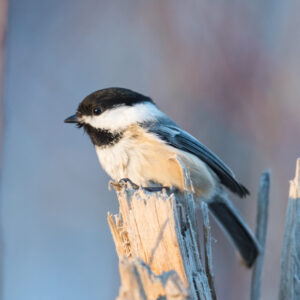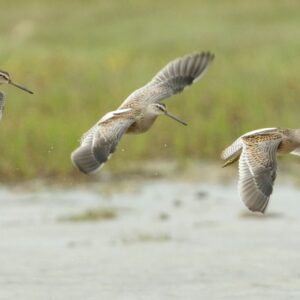Welcoming Home the Canada Goose
Our streets are abnormally quiet these days, and perhaps it’s this sound of silence that is allowing us to observe the spring birdsong more than ever before. Many bird species are returning home for the season, and the Canada goose is among the most recognizable.
The Canada goose is one of three species of birds with “Canada” included as part of its proper English name. The other two are the Canada jay and the Canada warbler, which are much smaller songbirds.
This large member of the goose family breeds across Canada and parts of the northern United States. Similar to many migratory birds, the Canada goose heads south for the winter, spending the colder months in areas ranging from southern Canada to the Gulf of Mexico.
They return north come spring. Between mid-March and mid-April, large V-shaped flocks of dozens to hundreds of geese can be observed migrating north to their breeding grounds. Migratory flocks are often heard by their distinctive honking before they are seen!
A Crucial Food Source for Some Indigenous Communities
The Canada goose is a staple food for the James Bay Cree in northern Quebec. Children in these communities would be off school this month—pandemic or not—in a period that’s been called the “goose break.”
For a few weeks in April, Cree families move out onto the land where they set up hunting camps. They shoot and harvest geese as they migrate through, and the cull provides an essential source of food for the remainder of the year.
This traditional hunting knowledge is passed down through generations, and the annual Canada goose hunt is just as important a cultural gathering as it is a time for food gathering. Once harvested, the meat is typically slow-cooked over an open fire for at least six hours.
The Current State of the Canada Goose
Native populations of the Canada goose became locally extinct in much of southern Canada by the mid-20th century.
Now, captive breeding programs, stricter hunting regulations, the expansion of corn fields and other crops, and urban locales dominated by grassy lawns, golf courses, and soccer fields, have fostered large new populations of semi-migratory Canada geese. These particular geese breed throughout much of southern Canada and migrate shorter distances depending on the severity of the winter.
In some cases, Canada geese are considered pests, leaving their feces in unwelcome places. In one Vancouver Island community, for instance, the manager of a recreational field went so far as to purchase a specialized “poop zamboni” to clean up the plentiful geese droppings!
The spring migration of birds would not be complete without the Canada goose. For more information about this species and more, visit the All About Birds website.
Do you have photos to share of this iconic Canadian species? Or perhaps you’ve managed to capture the distinctive honking sound in a video or sound clip? Reach out to us on social media to share! Our social links are at the bottom of this page.



